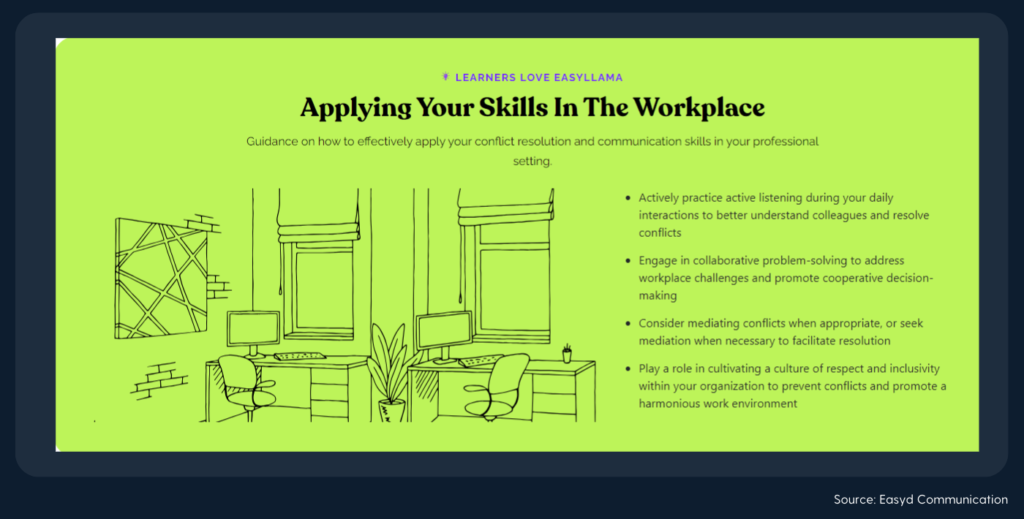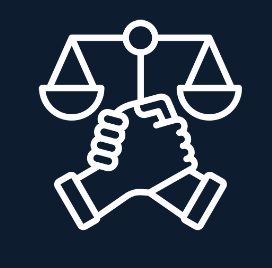
Mastering Workplace Conflict Resolution
Conflict is not a strange thing for people. Human beings experience it in their day-to-day lives – with their friends, families, and more so their professional lives. In the workplace, conflict causes a massive degree of frustration, pain, discomfort, sadness, as well as anger. It is a normal life aspect. In the world of today, organizations hire employees from diverse geographical locations with dissimilar cultural and intellectual backgrounds, as well as various viewpoints. In a working environment where people have disparate outlooks toward the same problems, disagreements are bound to happen.
What is conflict resolution?
Human interaction may sometimes lead to conflict, so response—and resolution—require conflict resolution strategies. Conflict resolution or negotiation is a way for the opposing parties to find a solution to their disagreement that leaves everyone reasonably satisfied. Sometimes, the person who resolves a conflict may be a neutral party or mediator while at other times, they may be someone involved in the conflict who takes an outside perspective to find a solution.The ability to resolve conflicts is often seen as a leadership trait. People who can identify conflicts, acknowledge different opinions and build a consensus are valuable to many organizations. They make it more likely for personal differences to be set aside so work can continue.

How to use conflict resolution in the workplace

Acknowledge the conflict
No one enjoys conflict, so it may be tempting to pretend it doesn’t exist or will resolve itself. While this may happen, trying to ignore a problem will often cause it to worsen. Ignored conflicts grow over time and reappear at inopportune times.

Define the problem
Defining the cause of the conflict will help you to understand how the issue grew in the first place. You need both parties to agree on what the issue is and discuss needs that aren’t being met on both sides. Obtain as much information as possible on each side’s outlook. Continue asking questions until you are confident that all the conflicting parties understand the issue.

Build active listening skills
You may hear what your colleagues say, but are you listening to them? People’s minds wander when others speak, especially in group settings, and they don’t truly absorb what’s been said. Even in digital communications, it’s easy to read and immediately forget about a message.

Use neutral terms and open body language
When engaged in a conflict, it’s natural to want to be closed off — but this only hinders the chance of resolution. Give yourself (or those in the conflict) time to cool off first. When managing the conflict, speak in a calm, agreeable manner. Use neutral language and separate the other person from the problem. It’s better to speak in “I” language instead of “you” language to avoid the other person feeling attacked.

Recognize and respect personal differences
Whether it be how a meeting was run, how a strategy was deployed or how stakeholders were engaged, recognizing that other people can interpret the same event in different ways is important to remember to resolve conflicts when they arise.
The importance of resolving workplace conflicts
Saves time and money
While a mismanaged conflict can be detrimental to your business, a properly handled conflict can save your business time and money. With fewer missteps and disagreements, your team will get where it’s going faster, without any needless spending on extra steps along the way.
Improves co-worker relationships
Employees do their best work in stress-free environments. Conflict resolution is a direct route to these environments. In contrast, it’s hard not to be stressed when the tension of conflict hangs in the air
Boosts employee performance
It follows from how resolved conflicts alleviate stress that conflict resolution also improves employee performance. You’ll likely notice substantial quality improvements from team members involved in a conflict directly after you resolve it.
Strengthens employee retention
Workplaces filled with conflict aren’t comfortable and few people would want to show up to them every day. Amid these conflicts, your retention rates could plummet. Conversely, if you proactively resolve conflicts, your retention rates will likely remain strong.
Sharpens communication skills
Every conflict you address is an opportunity to pinpoint the miscommunication that caused it and work on avoiding it in the future. With the right communication strategies in place, you can turn a potential crisis into a productive discussion.
Fosters superior company culture overall
No team will ever entirely avoid conflicts, but the best teams take a measured, level-headed approach to discussing and resolving them. This openness and free sharing of ideas and emotions make for a stronger company culture overall. Your current employees will benefit from this welcoming culture, which will also make it easier to attract new team members. As you resolve conflict, you build a future.
CONSIDERING YOUR RESPONSIBILITIES AS A LEADER
As a leader, not only must you address your own conflicts but help your employees work through theirs. When doing so, remember your responsibilities to your employees—whether ethical, legal, or economic.
Leadership, Ethics, and Corporate Accountability groups your ethical responsibilities to employees into five categories:
- Well-being: What’s ultimately good for the person
- Rights: Entitlement to receive certain treatment
- Duties: A moral obligation to behave in a specific way
- Best practices: Aspirational standards not required by law or cultural norms
- Fairness: Impartial and just treatment
In the course, Hsieh outlines three types of fairness you can use when helping employees solve conflicts:
- Legitimate expectations: Employees reasonably expect certain practices or behaviors to continue based on experiences with the organization and explicit promises.
- Procedural fairness: Managers must resolve issues impartially and consistently.
- Distributive fairness: Your company equitably allocates opportunities, benefits, and burdens.
Conclusion
Conflict is part of our day-to-day lives. You can disagree with your family, friends, or coworkers. But, there are various conflict resolution steps you can embrace to ensure this issue is not manageable. Managing and resolving conflict at work is integral in meeting organizational goals. So, if you have any problems or there are disagreements between your employers, look for ideal ways you can manage this situation.